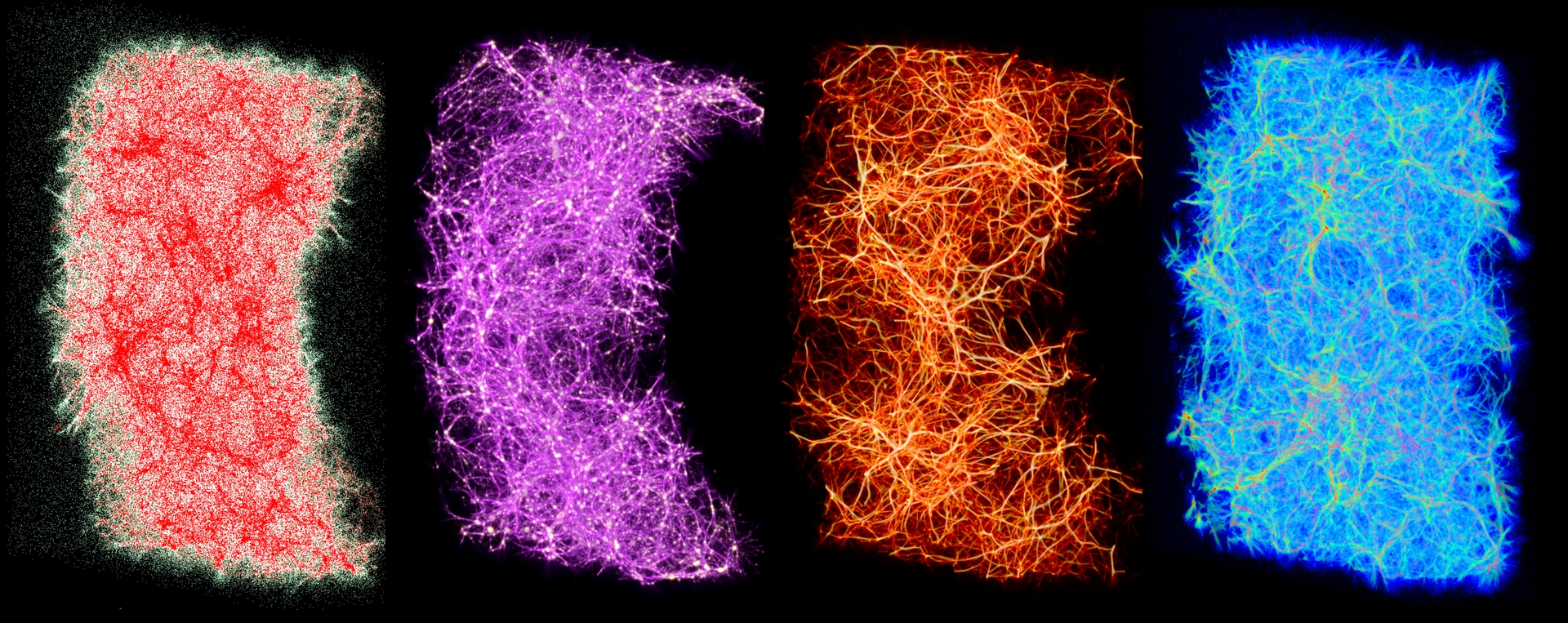Polyphorm: Structural Analysis of Cosmological Datasets via Interactive Physarum Polycephalum Visualization
Oskar Elek, Joseph Burchett, Jason Prochaska, Angus Forbes
External link (DOI)
View presentation:2020-10-29T15:15:00ZGMT-0600Change your timezone on the schedule page
2020-10-29T15:15:00Z

Fast forward
Direct link to video on YouTube: https://youtu.be/V_JivWRFJKA
Keywords
Astrophysics visualization, agent-based modeling, intergalactic media, Physarum polycephalum, Cosmic Web.
Abstract
This paper introduces Polyphorm, an interactive visualization and model fitting tool that provides a novel approach for investigating cosmological datasets. Through a fast computational simulation method inspired by the behavior of Physarum polycephalum, an unicellular slime mold organism that efficiently forages for nutrients, astrophysicists are able to extrapolate from sparse datasets, such as galaxy maps archived in the Sloan Digital Sky Survey, and then use these extrapolations to inform analyses of a wide range of other data, such as spectroscopic observations captured by the Hubble Space Telescope. Researchers can interactively update the simulation by adjusting model parameters, and then investigate the resulting visual output to form hypotheses about the data. We describe details of Polyphorm's simulation model and its interaction and visualization modalities, and we evaluate Polyphorm through three scientific use cases that demonstrate the effectiveness of our approach.